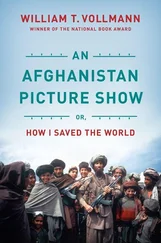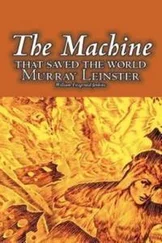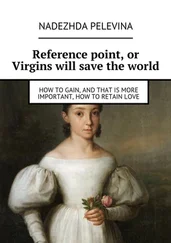1 ...7 8 9 11 12 13 ...16 In the 1500s the plumage of brightly coloured birds became fashionable for personal ornamentation. Taxes levied on the Indian populations recently subjugated by European armies were partly paid in macaw feathers. The long plumes of these birds were naturally collectable, desirable, exotic and beautiful. European consumers wanted them and would pay handsomely. Feathers were one thing, whole birds quite another. As the voyages of novelty-hungry explorers penetrated more and more remote localities, so the variety of parrots brought home increased. In 1501, Portuguese sailors brought the first macaws back to Europe from Brazil. The birds were known to the local people as ‘macauba’ and were probably Scarlet Macaws ( Ara macao ). Such birds were to become among the most desirable of all parrots to cage and own. Later on, a blue one would also enter the trade. That creature, the Spix’s Macaw, would become the most valuable of all.
In 1505 parrots were imported to England. They were an instant success and became fashionable accessories, at least for the better off. In addition to his six wives, Henry VIII kept one (an African Grey) at Hampton Court. A portrait of William Brooke, 10th Baron Cobham, with his family painted in the middle 1500s hangs at Longleat House in Wiltshire, England. It portrays a family dressed in typical Tudor clothes seated around a meal table. A parrot stands among the dishes of food. It looks like some species of amazon but is not any bird we know today.
Being vegetarian and able to thrive on a diet of seeds and fruits, 10 parrots could endure the long sea voyages that would kill most insectivorous birds. The trade became more regular and grew increasingly lucrative as the birds’ popularity soared. The establishment of Portuguese and Dutch colonies in Asia would soon ensure a supply of birds from the East too.
Mass-produced metal cages meant that the birds became more widespread in captivity as the ever-expanding supply of wild parrots brought down prices. When zoological gardens were opened in European cities during the nineteenth century, the cheeky, colourful parrots were an instant hit with the public. London Zoo was the first scientific zoological garden in the modern world. It was founded in 1828 and opened its gates on the fringes of the green expanse of Regent’s Park as a means to fund the scientific work of the London Zoological Society. Parrots were a big draw; so a special building, the Parrot House, was opened.
The red-brick Parrot House at the Zoo today is an essential part of the gardens’ character and stands as a monument to the popularity of parrots during Britain’s imperial age. Many of the parrots that have passed through there are among the rarest, most beautiful and coveted creatures in the world. Spix’s Macaws were fleetingly among them, but in an age when the fragility of our world was undreamt of, little or no thought would have been spared for the precariousness of these birds’ existence.
In those times, the complete disappearance of entire species through collecting must have seemed a most unlikely prospect. During this colonial age in which collecting was obsessive, the accumulation of animals would not have seemed very different from amassing, cataloguing and displaying inanimate objects. Today we know better. While our forebears took precautions to safeguard paintings, statues and other works of art for posterity, they could not fully understand the implications of hoarding these precious living creatures.
Even though the individual feathered treasures could not be preserved indefinitely, the rise of zoological gardens contributed to the growing familiarity and popularity of parrots to the point where such birds gradually took on symbolic values. Parrots came to stand for exotic places, tropical forests, colour and intelligence. These aspects of the birds’ appeal was in turn ruthlessly exploited by advertising and marketing executives.
The earliest example of parrots being used for sales purposes was in ancient India where high-class prostitutes carried a parrot on their wrists in order to advertise their profession. In the age of the mass media these birds have reached vast audiences to sell a wide array of products. One television advertisement had an amazon parrot playing the role of a talkative companion to a pirate. This was to sell rumflavoured chocolate.
Other parrots appeared in promotions for fruit drinks and tropical holidays, while a major British food retailer in 2001 adopted the ‘Blue Parrot Café’ brand for a range of children’s foods, featuring a blue macaw chosen for its friendliness and intelligence, and the sharp eyes it would need to select the very best ingredients. Gaudy Scarlet Macaws are the symbol of a Central American airline based in El Salvador: the fact that such birds are now extinct in that country has not deterred the marketing people. For obvious reasons, parrots have also repeatedly featured in promotions for telecommunications and copier products. This promotional use of parrots further elevated their popular familiarity. Inadvertently, it also further stimulated demand for the birds as pets.
Today, a large majority of the world’s different species of parrot are held somewhere in captivity. One estimate is that between 50 and 60 million of them are kept worldwide. Hundreds of parrot, parakeet, cockatoo and macaw clubs and societies exist for enthusiasts. They have hundreds of thousands of members drawn from the many millions who keep parrots of some sort.
The most widespread parrot in captivity today is the humble budgie. These pretty little green parakeets were first brought back from Australia in 1840 by John Gould, and since then have been effectively domesticated. The word budgerigar appears to be derived from the name given to the bird by Australia’s Aboriginal people. Budgies are probably the commonest pets after dogs and cats and have been bred in captivity for hundreds of generations into a variety of colour variants, including white, blue and yellow.
It wasn’t of course simply the convenience of parrots’ ability to tolerate long sea voyages that led to their popularity in captivity. Of the thousands of bird species alive today, it is remarkable how one group, the parrots, has so clearly emerged as being our most popular and valuable feathered companion. Animal traders and pet shops seldom stock seagulls, herons or thrushes; beautiful as these birds are, there is little or no demand for them as pets.
One reason why parrots are so hugely engaging compared with most other birds is that they can manipulate objects. In their natural forest homes, parrots clamber through foliage using their beak like a grappling hook or third foot swinging in all directions to reach the finest fruit, nectar and seed delicacies at the tips of even the thinnest twigs. Once they have procured their favoured feast, they need great dexterity in manipulating tricky food items with their feet, bill and fleshy prehensile tongues.
This acrobatic ability and ‘hand’ to eye coordination makes these birds’ behaviour instantly charming to dextrous humans who can see aspects of themselves in the brightly coloured and inquisitive birds. And, like people, individual parrots show a distinct preference in the use of one or other of their reptile-like feet for manipulating objects. One study of South American Brown-throated Conures ( Aratinga pertinax ) revealed that about half habitually used their right foot and half the left.
On top of this though, surely the principal reason why we find parrots so irresistible is because of their ability to copy the human voice. From earliest times, the capacity of parrots to ‘talk’ has fascinated us. After thousands of years, it is still their most famed and demanded attribute. The talent for mimicry has impressed people down the ages. Parrots were, for example, allocated roles in various Indian fables and plays. The Hindu sex manual the Kama Sutra sets out no fewer than 64 achievements that a man must strive for – one was to teach a parrot to talk. Four centuries before Christ it was perhaps more surprising for Ctesias’s European readers to learn of a bird that could talk than the mythical one-horned unicorn that he wrote about. His writings in Indica about a Blossom-headed Parakeet ( Psittacula roseata ) he saw in the East included an account of its abilities in copying the human voice. The bird belonged to an apothecary he had met on his travels, and Ctesias said it ‘could speak an Indian language or Greek, if it had been taught to do so’. Pliny’s description of parrots included the observation that they ‘conducted clear conversations and that, in order to teach them to speak, they must be given a few raps with a small stick on the head, which is as hard as their beak’.
Читать дальше












